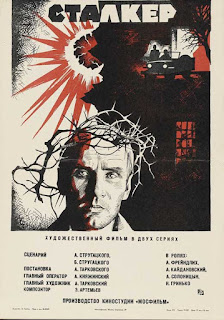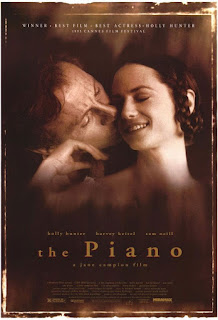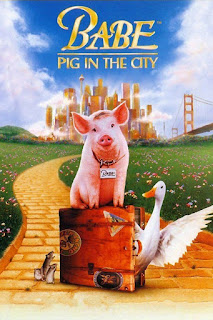January 17th: STALKER (Andrei Tarkovsky, 1979)
NOTE: This film will be projected in the high-definition Blu-ray format.
In a post-apocalyptic world, two men go on a quest through a restricted area with the help of a guide, who can supposedly lead them to a place where their deepest desires will be fulfilled.
Andrei Tarkovsky was born in the Soviet Union, attended the state film school, and benefitted from increasing opportunities for younger directors in the mid-1950s. Then-current head of state Nikita Khrushchev was softer on trade restrictions and Tarkovsky was exposed to international arts and culture that many of his forbearers were not, having seen the works of film masters from Asia, Europe, and Hollywood.
While never prevented from working or having his films banned, Tarkovsky often had to battle censors over subtext in his pictures, and frequently had proposed projects declined by government financiers. His rate of output could be compared to his aesthetic style: deliberately-paced, contemplative. His subject matter veered from life during wartime to historical biography to science fiction to autobiographical stream-of-consciousness.
Tarkovsky had read a novel by Russian brothers Arkady and Boris Strugatsky, and perhaps because he had recently adapted a work of Polish science fiction writer Stanislaw Lem with Solaris, recommended it as a potential film to director Mikhail Kalatozov (The Cranes Are Flying). The latter was unable to get the rights, and Tarkovsky began thinking more deeply about the book's themes, and with the idea to expand it considerably took over the project himself.
Originally intended to be shot primarily in the desert region close to the border with China, an earthquake caused Tarkovsky to change locations, winding up in Estonia, the verdant landscape a marked difference from how it would have looked. Shooting occurred over most of 1977, with the director replacing his cinematographer after three months. Experimenting with a new Kodak film stock, the production hit a major roadblock when the local lab was unable to process any of the footage, and all of it was scrapped.
Hiring a third cinematographer, Alexander Knyahinsky, the entire film was reshot the following year, with reduced funding from the government restricting the amount of props and vehicles available. Luckily the cast was small, with three main characters, including Alexander Kaidanovsky, who had appeared in all of Tarkovsky's previous films. Part of the film was shot in an area containing toxic waste, which would later be blamed for several of the cast and crew members getting cancer, including Tarkovsky himself.
In post-production, Tarkovsky placed great importance on the sound design, with many of the sound effects processed or augmented electronically. Opting to eschew a traditional musical score, he worked with his previous collaborator, composer Eduard Artemyev to blend Oriental and Western music, experimenting with playing them on the opposite region's instruments. Musicians from Armenia and Azerbaijan were brought in to participate in the recording. Much of the music was ran through synthesizers for effect.
The government was not pleased with the end result, but the film was still released and had over 4 million ticket sales. It is now recognized as one of Tarkovsky's stronger works, and in 2012 Sight & Sound magazine's decennial critics poll of the greatest films of all time saw it place in the #29 spot. Tarkovsky would leave the Soviet Union for good in 1982, and his final two films were made in Italy and Sweden, respectively, before his death in 1986.
Running time is 2 hrs, 40 min.
In a post-apocalyptic world, two men go on a quest through a restricted area with the help of a guide, who can supposedly lead them to a place where their deepest desires will be fulfilled.
Andrei Tarkovsky was born in the Soviet Union, attended the state film school, and benefitted from increasing opportunities for younger directors in the mid-1950s. Then-current head of state Nikita Khrushchev was softer on trade restrictions and Tarkovsky was exposed to international arts and culture that many of his forbearers were not, having seen the works of film masters from Asia, Europe, and Hollywood.
While never prevented from working or having his films banned, Tarkovsky often had to battle censors over subtext in his pictures, and frequently had proposed projects declined by government financiers. His rate of output could be compared to his aesthetic style: deliberately-paced, contemplative. His subject matter veered from life during wartime to historical biography to science fiction to autobiographical stream-of-consciousness.
Tarkovsky had read a novel by Russian brothers Arkady and Boris Strugatsky, and perhaps because he had recently adapted a work of Polish science fiction writer Stanislaw Lem with Solaris, recommended it as a potential film to director Mikhail Kalatozov (The Cranes Are Flying). The latter was unable to get the rights, and Tarkovsky began thinking more deeply about the book's themes, and with the idea to expand it considerably took over the project himself.
Originally intended to be shot primarily in the desert region close to the border with China, an earthquake caused Tarkovsky to change locations, winding up in Estonia, the verdant landscape a marked difference from how it would have looked. Shooting occurred over most of 1977, with the director replacing his cinematographer after three months. Experimenting with a new Kodak film stock, the production hit a major roadblock when the local lab was unable to process any of the footage, and all of it was scrapped.
Hiring a third cinematographer, Alexander Knyahinsky, the entire film was reshot the following year, with reduced funding from the government restricting the amount of props and vehicles available. Luckily the cast was small, with three main characters, including Alexander Kaidanovsky, who had appeared in all of Tarkovsky's previous films. Part of the film was shot in an area containing toxic waste, which would later be blamed for several of the cast and crew members getting cancer, including Tarkovsky himself.
In post-production, Tarkovsky placed great importance on the sound design, with many of the sound effects processed or augmented electronically. Opting to eschew a traditional musical score, he worked with his previous collaborator, composer Eduard Artemyev to blend Oriental and Western music, experimenting with playing them on the opposite region's instruments. Musicians from Armenia and Azerbaijan were brought in to participate in the recording. Much of the music was ran through synthesizers for effect.
The government was not pleased with the end result, but the film was still released and had over 4 million ticket sales. It is now recognized as one of Tarkovsky's stronger works, and in 2012 Sight & Sound magazine's decennial critics poll of the greatest films of all time saw it place in the #29 spot. Tarkovsky would leave the Soviet Union for good in 1982, and his final two films were made in Italy and Sweden, respectively, before his death in 1986.
Running time is 2 hrs, 40 min.











Comments
Post a Comment